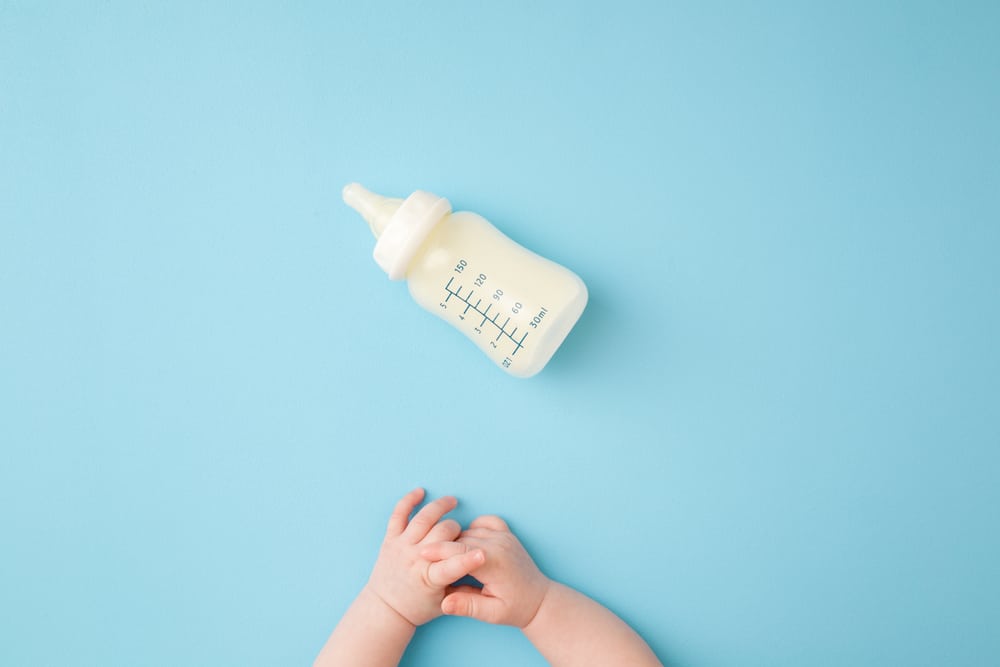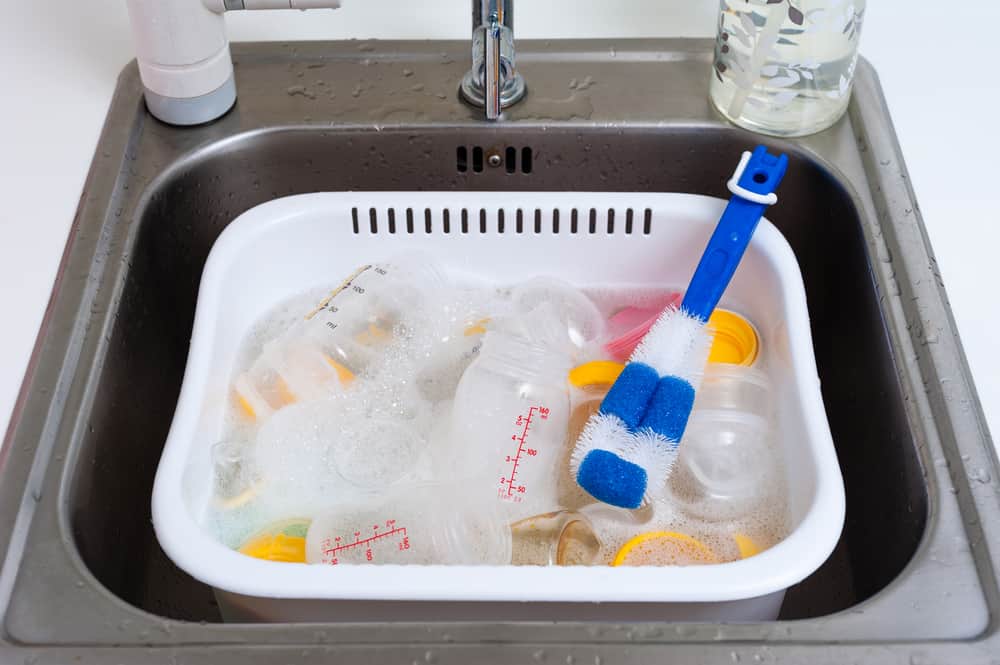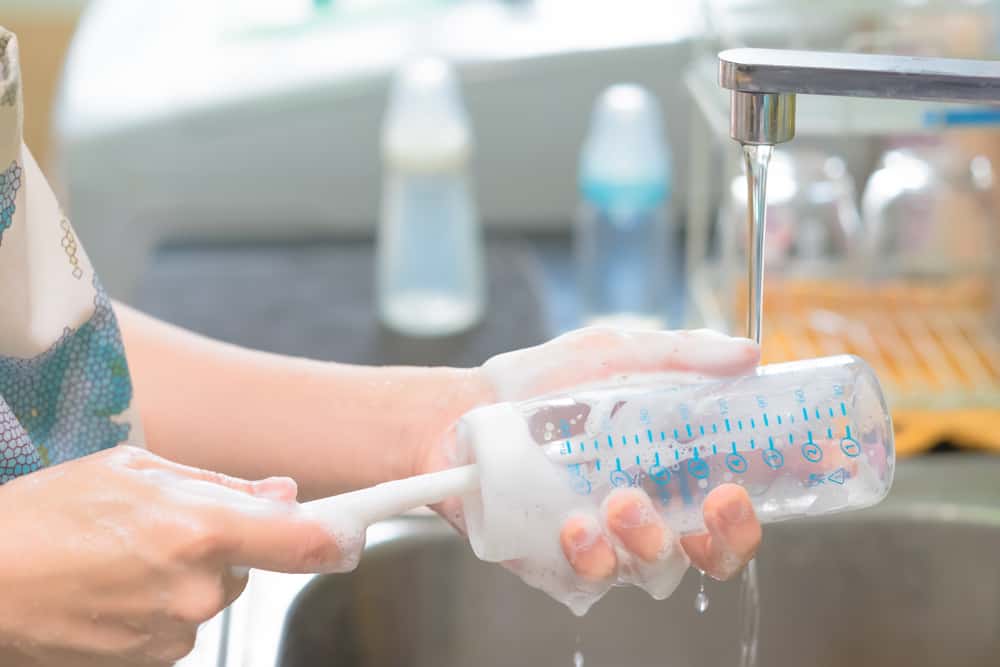Infants and newborns typically have underdeveloped immune systems, making them more vulnerable to infections from pathogens like viruses, bacteria, and fungi. Therefore, it's crucial to ensure that whatever they eat or drink is free of these hazards.
If there's one area that needs special attention, it's your baby bottle. Glass baby bottles used to be the norm. While a glass bottle can withstand high temperatures for sanitization more readily than a plastic bottle, they do have some drawbacks. Glass bottles are heavy and can be prone to breaking when dropped - creating a hazard especially if you already have a toddler or two running around.
As a result, plastic bottles have gradually become more prevalent over time. You need to make sure you keep your plastic baby bottles clean. If you don't clean baby bottles properly, they can harbor and enable the rapid growth of germs in the formula or breast milk they hold. And if your newborn takes this contaminated milk during bottle feeding, their underdeveloped immune system may not be strong enough to fight the resulting infections.
This article answers the question, “Are Avent Bottles Dishwasher Safe?" It also elaborates on alternative methods of keeping feeding bottles clean and hygienic for your infants, including step-by-step guides on washing Avent baby feeding bottles.
Are you looking for a baby feeding bottle that's easy to clean or sterilize? Look no further-a Philips avent bottle is easy to clean. Avent baby bottles are designed for optimum hygiene.
For instance, their bottle nipple is made of long-lasting silicone that's highly resistant to discoloring and stickiness. The silicone nipples is also odorless and flavorless. What's more-the bottles have fewer parts than your typical anti colic bottle. This makes it a bit easier for sterilization and cleaning.
Caring for Avent Baby Bottles
The best part is that every starter pack has a bottle brush for cleaning the bottles' nipples, so you don't have to worry about the best material to use for cleaning.
Before we delve into whether you can clean Avent bottles using a dishwasher, let's look at a general guide on washing them before and after feeding.
You must have gathered that Philips Avent was keen on hygiene when designing their bottles, so cleaning them shouldn't be an uphill task. Washing the bottles before feeding the baby often requires only hot water and soap.

Make sure bottles are clean before giving them to your baby
If the baby is less than three months old, was born prematurely, or has a weak immune system, you may need to sterilize the bottles every day before feeding. However, if they're above three months old and have normal immunity, you must not sterilize them daily.
Whatever the case, you can either boil or use the Philips Avent steam sterilizer. Sterilization can kill the most stubborn pathogens and provide extra protection against infections.
It's advisable to wash the Avent bottle immediately after feeding your baby. The longer you leave the bottle uncleaned, the more time the milk remnants will have to dry and stick on its inner surfaces, making it challenging to clean.
If this happens repeatedly, you may soon begin noticing foul odor from the bottles. Sometimes leaving the bottles uncleaned for a long time may cause discoloration and encourage rapid growth of germs, putting your baby at the risk of catching diseases.
Avent Natural Baby Bottle 2.0
You can rinse the bottle thoroughly and clean it later if you don't have time. Rinsing removes milk or formula residues that may be a health hazard. It also prevents the milk from drying in the bottle and causing discoloration.
Alternatively, you can store the bottles in a refrigerator and clean them later. You can then clean them using warm water and soap or through sterilization.
The simple answer is yes; you can use dishwashers to clean Avent bottles. Most people often worry about the nipple spoiling, but that won't happen with Avent bottles-their nipples comprise resistant, dishwasher-safe silicone.

It can be a bit tedious to hand wash baby bottles - fortunately Avent baby bottles are dishwasher safe
The bottles can withstand any dishwasher's hottest water setting. They are also strong enough to survive sterilization through a heated drying cycle.
Cleaning Avent bottles using a dishwasher ensures thorough cleaning and can save you time and effort. Here are five steps on how to go about it:
The Avent bottle comes with a bottle brush for cleaning by hand. You can also use other cleaning materials, provided that you don't use them for other utensils. If you decide to clean the bottles by hand, find a container for washing the bottles only to prevent cross-contamination. Also, ensure that the bottles are never in touch with the sink.

Using a bottle brush to wash a baby bottle
Here are five steps on how to wash Avent bottles by hand:
Avent is one of the few baby product companies serious about safety and quality. The Avent bottles are safe for your baby and also dishwasher safe. They compromise strong materials that can withstand even the hottest dishwasher water setting. So, if you have a fixed schedule, you can put the bottles in a dishwasher for a fast, thorough wash.
